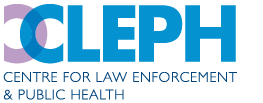

LEPH2018 moves the discussion from Description (LEPH2012), Analysis (LEPH2014) and Action (LEPH2016) to Leadership in Policy and Practice (LEPH2018). The Conference Program will be heavily weighted towards promoting collaborative action – in practice, research, policy development and in the integration of these three elements.
Go to the conference website www.leph2018toronto.com

Disparities in Health and Criminal Justice
Health states are intimately related to socioeconomic status, which itself relates to the major direct determinants of health (including access to and quality of health care, social and physical environments, and health behaviors) and further indirect determinants (such as inequality in access to and quality of education, income inequality and occupational environment). Access to justice, and outcomes of involvement with the criminal justice system, are also intimately related to socioeconomic status and class. Both disparities affect the same communities in ways that are inextricably linked. Therefore, both disparities must be addressed jointly.
Health differences adversely affecting socially disadvantaged groups are particularly unacceptable because ill health can be an obstacle to overcoming social disadvantage … It is time to be explicit that the heart of a commitment to addressing health disparities is a commitment to achieving a more just society.
Braveman PA et al. Health Disparities and Health Equity: The Issue Is Justice. Am J Public Health. 2011 Dec; 101(Suppl 1): S149–S155
Global shifts are taking place in the culture and orientation of law enforcement agencies, who have seen their role as purely focused on public safety, specifically crime combat and maintenance of public order, but are increasingly beginning to understand the inextricable links between public safety and public health. In part this has resulted from deliberations about ‘community policing’, ‘problem solving policing’, ‘joined-up policing’ and ‘smart policing’. Being responsive and forward thinking has led police agencies, particularly in the Global North, to consider the range of social and economic issues that underpin insecurity and risk. Police are now engaging as nodal actors in the governance of both public safety and public health; how this is configured varies according to existing resources, skills and network actors.
